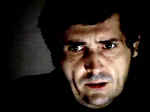I always knew that someday my profession would be smeared in the media.
Hey, if they don't respect the President, if even Condi takes some heat, how could I, lowly exorcist that I am, hope to escape an occasional rake over in the press?
Little did I suspect that it would be brought on by a Romanian contemplative monk.

It has been reported that monk Daniel Petru Corogeanu, assisted by four orthodox nuns at the convent of the Holy Trinity in northeast Romania, killed 23 year old Maricica Irina Cornici, also a nun, during an attempted exorcism.
The monk killed the nun. Not the devil. That is an exorcism gone wrong. A real exorcist does NOT off the possessed.
The autopsy revealed dehydration, asphixiation and exhaustion as causes of death. Whether or not she was possessed, Maricica indeed went through hell before dying.

Bound hand and foot to a cross, starved for 72 hours, burlap sack stuffed in her mouth and exposed to low temperatures, she was truly a victim of the demonic,
but in human, not supernatural, form. What was performed on this young lady was not a religious rite, it was torture, plain and simple.
Arcane as Orthodox ritual may seem in some aspects, I seriously doubt that monk Daniel was following protocol in his attempts to "drive the devil out", as he so succinctly put it. Like Roman Catholicism, there is a rite of exorcism in the Orthodox practice. Unlike Roman Catholicism, Orthodox monks do not live in congregations comparable to our religious orders and exorcists are not specifically appointed by their bishops. This means there is a lot of room for free-lancing and not a whole lot of accountability.
The rite of exorcism in the Roman Catholic Church is not a spell, it is not a therapy, it is not a cure. It is a prayer and a blessing. It is also a last resort.
There is no way to know, even after an exorcism has been performed, whether a supernatural evil is or was present in the afflicted person. There is no sure fire sign of demonic possession. The prayer in an exorcism asks for God's grace to protect the subject from evil in all its forms. The blessing invokes God's mercy and clemency as healing for a person troubled in body and spirit.

Exorcism is used sparingly in the Catholic Church. Extreme psychological and emotional pathologies, radical personality disorders and even glandular malfunctions can provoke such startling and lasting effects in a patient that, sometimes out of desperation, sometimes out of faith, the family may have recourse to their pastor or bishop in search of supernatural aid. It is the bishop's competence to discern the true nature of the situation, based on testimony and medical evidence and act accordingly.
An exorcism, in the rare case it is performed, is never done under the impudent gaze of the media. It is done without bondage, without violence, without MONKey business. :l

